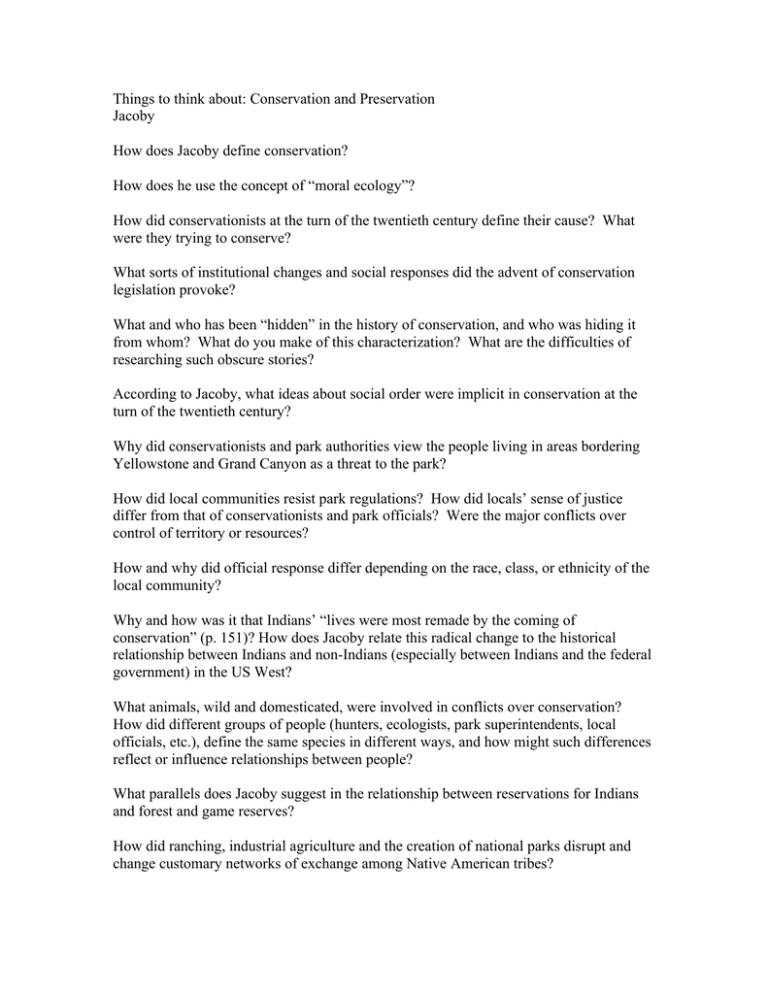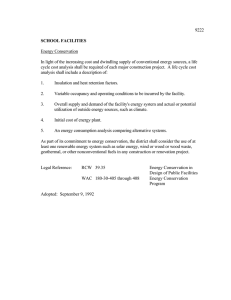Things to think about: Conservation and Preservation Jacoby
advertisement

Things to think about: Conservation and Preservation Jacoby How does Jacoby define conservation? How does he use the concept of “moral ecology”? How did conservationists at the turn of the twentieth century define their cause? What were they trying to conserve? What sorts of institutional changes and social responses did the advent of conservation legislation provoke? What and who has been “hidden” in the history of conservation, and who was hiding it from whom? What do you make of this characterization? What are the difficulties of researching such obscure stories? According to Jacoby, what ideas about social order were implicit in conservation at the turn of the twentieth century? Why did conservationists and park authorities view the people living in areas bordering Yellowstone and Grand Canyon as a threat to the park? How did local communities resist park regulations? How did locals’ sense of justice differ from that of conservationists and park officials? Were the major conflicts over control of territory or resources? How and why did official response differ depending on the race, class, or ethnicity of the local community? Why and how was it that Indians’ “lives were most remade by the coming of conservation” (p. 151)? How does Jacoby relate this radical change to the historical relationship between Indians and non-Indians (especially between Indians and the federal government) in the US West? What animals, wild and domesticated, were involved in conflicts over conservation? How did different groups of people (hunters, ecologists, park superintendents, local officials, etc.), define the same species in different ways, and how might such differences reflect or influence relationships between people? What parallels does Jacoby suggest in the relationship between reservations for Indians and forest and game reserves? How did ranching, industrial agriculture and the creation of national parks disrupt and change customary networks of exchange among Native American tribes? Were stuffed animal heads and other dead animal parts originating from national parks valued differently by different groups of people? How did ideals of masculinity and “the strenous life” figure into debates about conservation? MIT OpenCourseWare http://ocw.mit.edu 21H.421 Introduction to Environmental History Spring 2011 For information about citing these materials or our Terms of Use, visit: http://ocw.mit.edu/terms.






